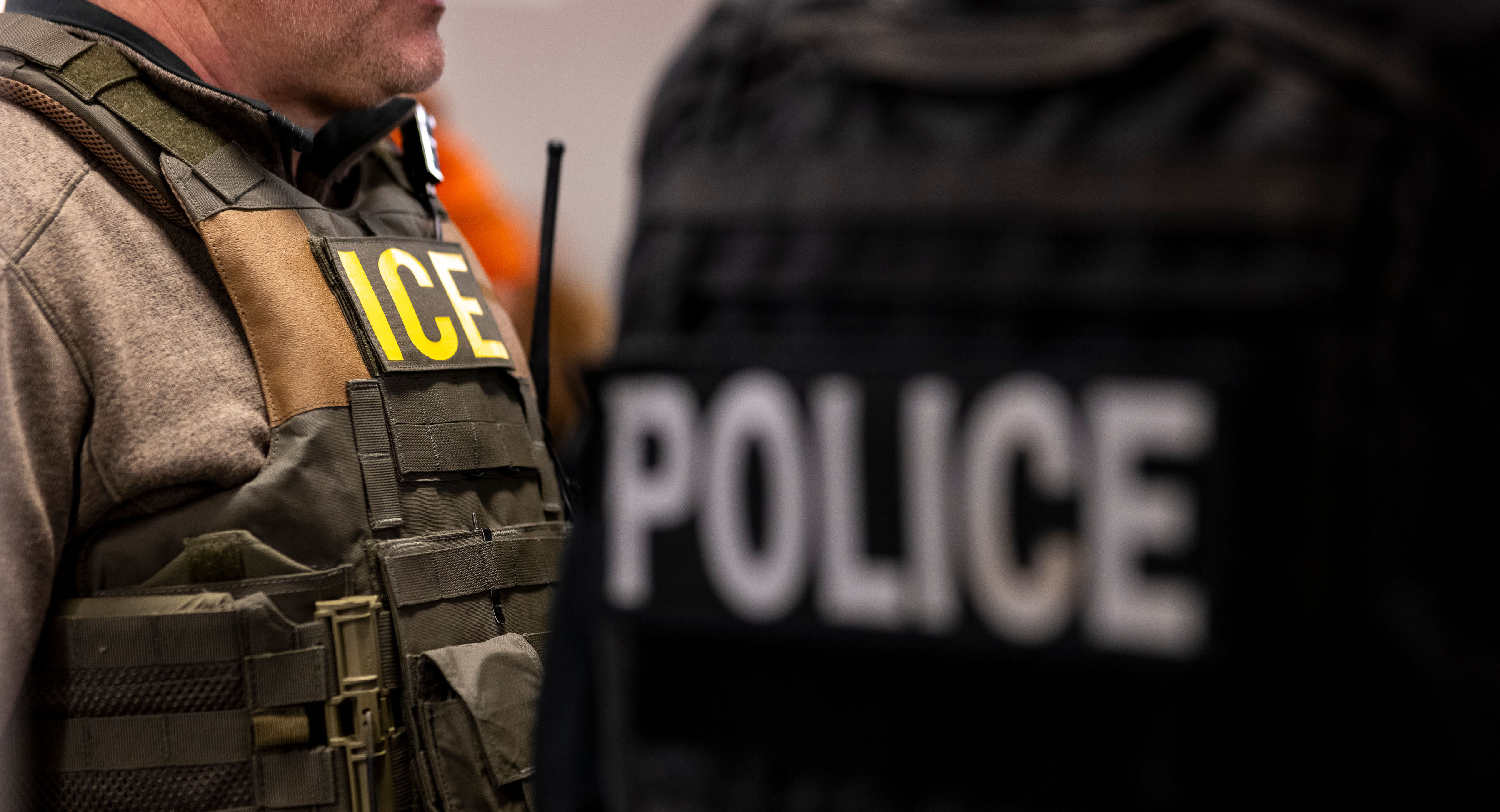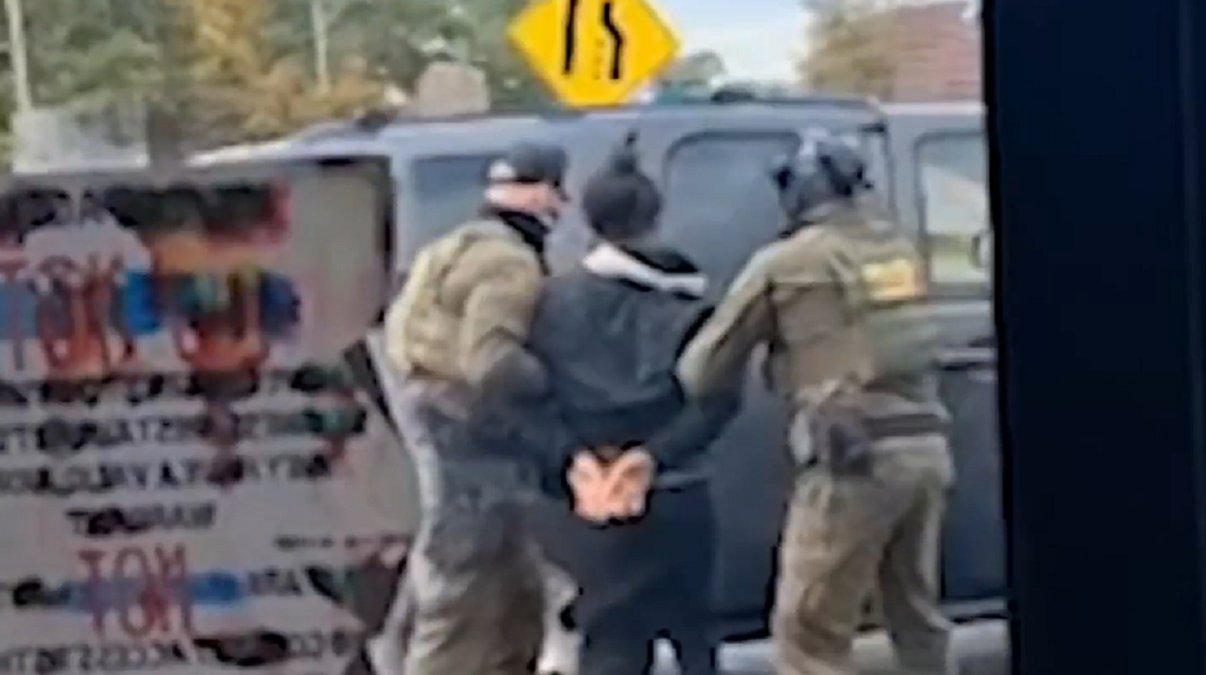The video in this story is from a previous report.
Attorneys representing a group of protesters, clergy and journalists suing the federal government over what they allege are excessive and “indiscriminate” use of tear gas and pepper spray argued before a federal judge Wednesday morning, saying the court should issue a preliminary injunction that would stop federal agents from using crowd control chemicals against protesters and others in the Chicago area.
During opening remarks, one of the plaintiffs’ attorney, Craig Futterman, repeatedly quoted Border Patrol Chief Gregory Bovino saying: “‘You don’t want to get tear gassed, then don’t protest.’ Your honor, this case cries out for a preliminary injunction.”
Futterman argued that federal agents have repeatedly used tear gas and pepper spray against non-violent protesters, clergy or members of the press throughout the eight weeks since the Chicago-area immigration enforcement campaign known as Operation Midway Blitz began.
Attorneys also argued that agents use of force infringed on the plaintiffs their constitutional rights to assemble, and cover protests and demonstrations.
While acknowledging that some individuals may have slashed tires of agents’ vehicles or thrown objects, Futterman argued they’ve been met with “brutal violence” by the same federal government tasked with protecting their constitutional rights.
“This case is about retaliating against people because the defendants don’t like what they have to say,” Futterman said.
Sarmad M Khojasteh, an attorney representing the federal government, told Judge Sara Ellis in response that she should “reject the notion that first amendment sanitizes the violence” that agents have seen or experienced over the last several weeks, saying agents’ lives have been threatened.
Khojasteh added that the idea that “throwing rocks is non-violent resistance… this is nonsense.”
Wednesday’s hearing was expected to last at least five hours, with Judge Judge Ellis saying she would issue a ruling on the request for a preliminary injunction within 14 days.
Incidents involving use of force
Previously, Ellis had issued a temporary restraining order on October 9th barring federal immigration agents from using tear gas or pepper spray on non-violent protesters or members of the community unless there is an imminent threat.
Ellis has expressed concern – and plaintiffs’ attorneys have argued – that federal agents have either ignored or violated that order by using canisters of tear gas or pepper balls during immigration enforcement arrests in Albany Park on October 12; in Chicago’s East Side neighborhood on October 14; and again within the past two weeks in Old Irving Park, Lakeview, Evanston and Little Village, including an incident in which Bovino admitted to throwing canisters of tear gas in Little Village during an immigration enforcement operation there.
The Department of Homeland Security initially posted to the social media platform X that Bovino used tear gas because he was struck by a firework shell. A spokeswoman later posted to X that it was a rock. And in interviews with network news reporters after the incident, Bovino said he was struck in the head by a rock.
During a hearing Tuesday afternoon, attorneys for the plaintiffs said they plan to introduce evidence the Bovino lied about being struck by a rock. An attorney for the government said she wanted to push back hard against any implication that any of the government witnesses were lying.
Bovino was expected to testify Wednesday, with at least portions of his recent video deposition played in court.
A recent investigation by NBC 5 Investigates examined videos and photos posted to social media that raised questions about if Border Patrol agents’ use of force may have violated their own use of force policies.
Those videos and photos show protesters who had been struck in the face or back by pepper balls leading to visible marks or bleeding.
The use of force policies prohibit Border Patrol agents from firing intentionally firing crowd control devices at persons’ head, neck, spine or groin. It’s not immediately clear what the agents’ intent was, and their faces are often covered making it difficult to identify them. Officials from ICE and Border Patrol have said agents have covered their faces over to protect their identities over doxxing concerns.
Among the first to testify Wednesday was Father Brendan Curran, who said he witnessed people being struck by crowd control pepper balls while attending protests outside the ICE processing facility in Broadview, which serves a temporary holding facility for immigrants arrested by federal agents.
Since Operation Midway Blitz began, DHS says they’ve arrested more than 1,800 people as of mid-October.

Want more insights? Join Working Title - our career elevating newsletter and get the future of work delivered weekly.


